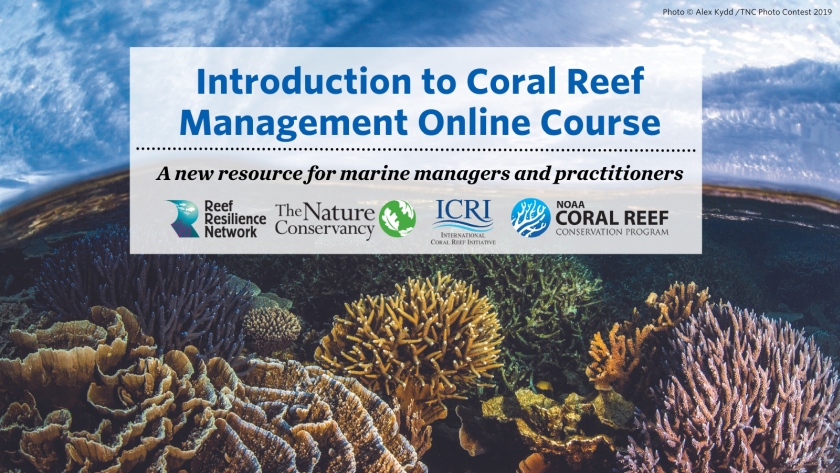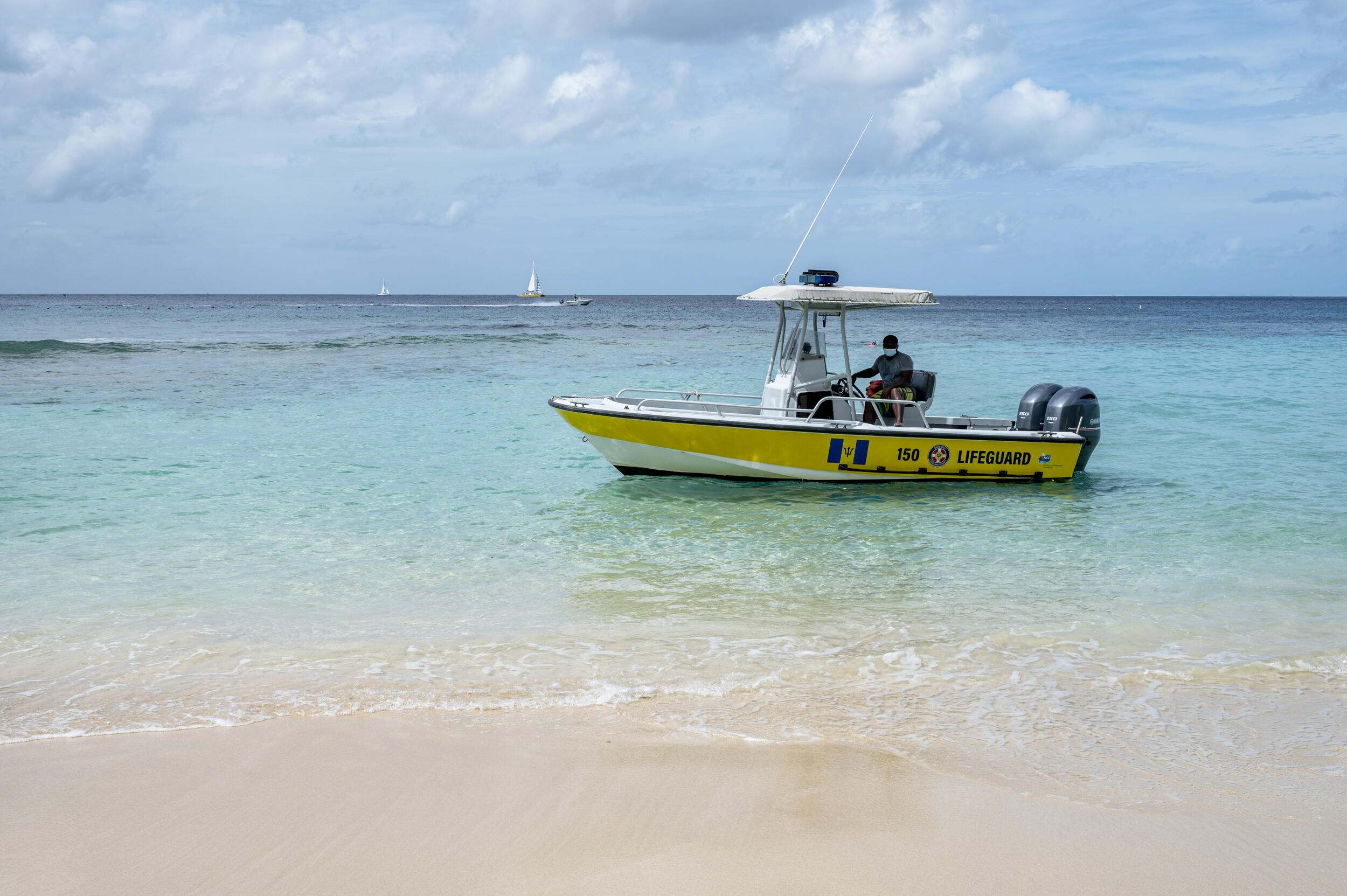Developing Sustainable Aquaculture in Palau
Location
Palau and Federated States of Micronesia
The challenge
Palau is a global leader in marine conservation – in 2015, the country designated 80% of its exclusive economic zone as fully protected from extractive activities. As a marine country, fish and other seafood are very important to Palauans due to both high local seafood consumption rates (67.7kg/person) and the tourism economy. However, due to increasing numbers of visitors, declining coastal fishery numbers, and impacts of climate change, the local fisheries are expected to be reduced by 25% by 2050. Palau also currently imports about 86% of its food resources from foreign countries. The decreasing wild fisheries and high food importation rate threaten Palau’s food security and led the president of Palau, Tommy Remengasau, to place importance on developing aquaculture in a sustainable manner.
“Palau cannot continue to rely entirely on the wild when it comes to subsistence and commercial food production”- Tommy Remengasau
Until recently, Palauan aquaculture development focused primarily on improving its hatchery production with species such as grouper and rabbitfish. However, it was determined that sound governance and decision support tools to enable the growth of sustainable aquaculture was lacking and inhibiting the development of a sustainable aquaculture industry.
Actions taken
Increasing Production and Feed Sustainability
Since 2015, The Palau Bureau of Marine Resources (BMR) in partnership Palau National Aquaculture Center (PNAC) – a partnership between Palau Government and Taiwan Government – has been encouraging the production and farming of rabbitfish, in hopes of alleviating pressure on the wild rabbitfish stocks that were being overexploited due to high local preference for the species. In addition to alleviating pressures on wild rabbitfish, the overall goals of developing rabbitfish aquaculture are creating a sustainable livelihood for Palauans while contributing to food security.
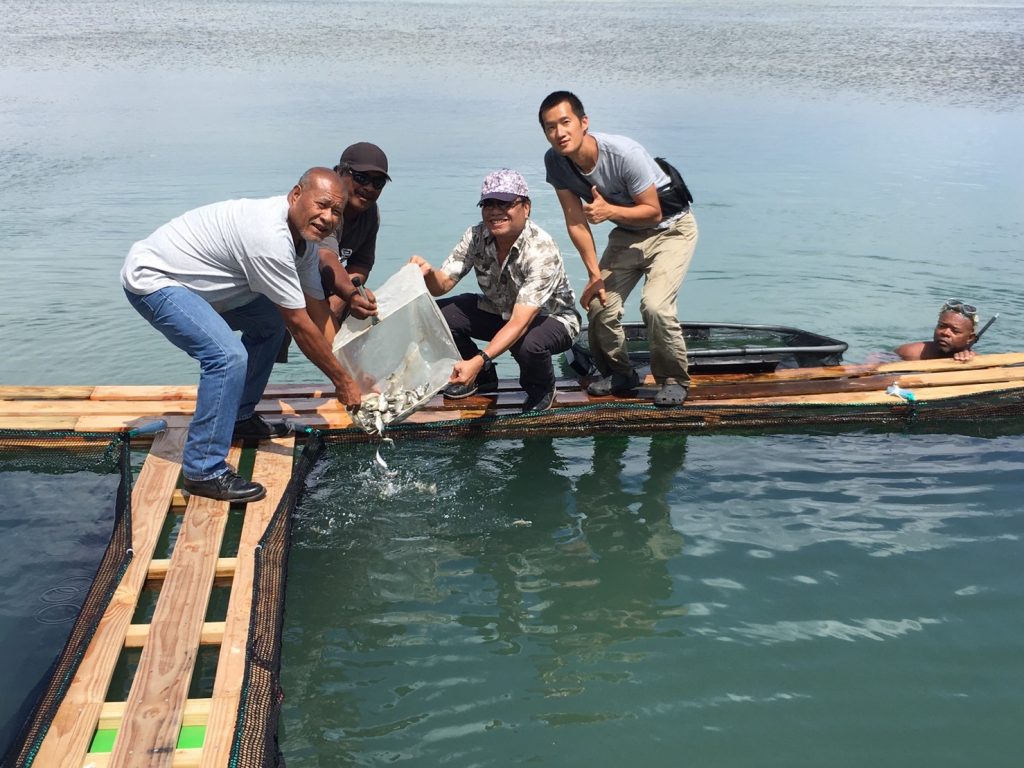
Stocking rabbitfish in a newly built cage with the assistance of locals and director of the Bureau of Marine Resources of Palau, Leon Remengasau. Photo © Julio Camperio
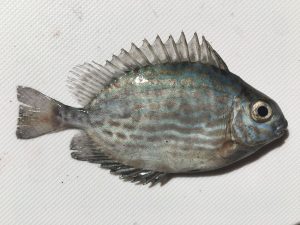
Juvenile rabbitfish being farmed at the Palau National Aquaculture Center to be delivered to local farmers. Photo © Julio Camperio
The BMR and PNAC have assisted farmers by building cages, providing juvenile rabbitfish, feed, and technical assistance. Additionally, TNC recently conducted research to test new rabbitfish feeds that contain little to no fish meal. In general, marine finfish aquaculture feeds can require high levels of fish meal, which can lead to overreliance and impacts on wild stocks. The recent fish meal free feeds testing at the Palau National Aquaculture Center showed improved growth and efficiency compared to the current feed being used that was formulated for milkfish.
Spatial Planning
In February 2019, TNC and partners from BMR, Environmental Quality Protection Board (EQPB), and the Palau Community College (PCC) kicked off the first stakeholder workshop for a project to assist in the sustainable development of marine aquaculture using marine spatial planning. Through grant funding provided by the U.S. National Aeronautics and Space Administration (NASA), the multi-year project is building capacity for a sustainable, climate-ready aquaculture sector, including siting, management, and monitoring in Palau.
Essential components of this project are the use of spatial analysis products to assist in determining aquaculture zones for sustainable development. The preliminary results are available online through this decision support tool.
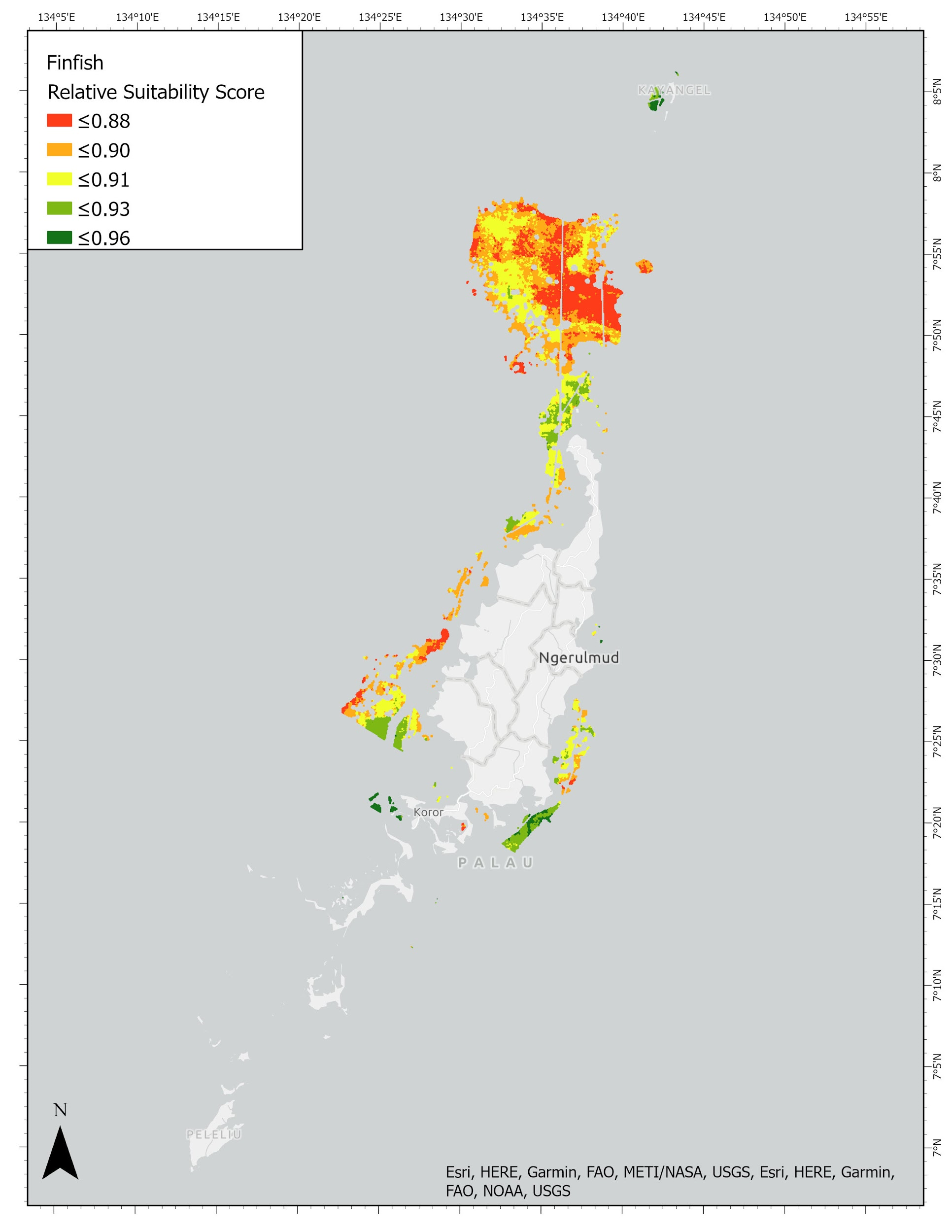
Sample Siting Analysis for Finfish Aquaculture in Palau. Source: The Nature Conservancy
How successful has it been?
The sales of farmed rabbitfish per cage range from as low as $996 to $2,365 (BMR Rabbitfish Harvest Data as of May 2020). The large variations in survival and health of the farmed fish are a result of farm management (cleaning and repairing of net) and feeding. Improving existing farm management practices is a key way to improve survival and growth rate of rabbitfish, as well as improving financial performance for the farmer. Approaches to reducing the cost of maintaining farms, such as cooperative farming, could be considered to improve fish health and farmer profits.
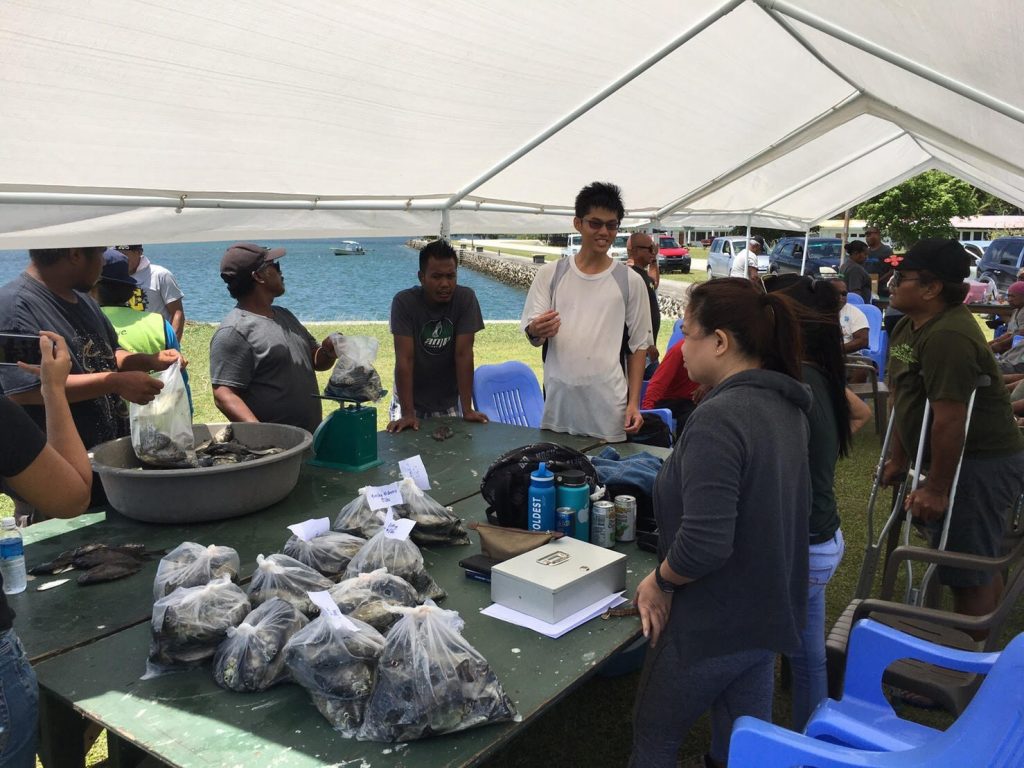
Palau locals assisting and purchasing recently harvested rabbitfish. Photo © Julio Camperio
While the spatial planning and aquaculture zoning work is still underway, initial data is showing areas further from shore as the most suitable for fish aquaculture, as these areas are an appropriate distance from sensitive habitats and have sufficient water depth, currents, and flushing. Given the further distance from shore to ensure sustainable cage siting, individually owned and operated small scale farms in the range of 1-5 floating cages in Palau may not be economically feasible to operate unless subsidized.
Lessons Learned and Recommendations
- Involve the community and key stakeholders at all stages for regular engagement and feedback
- Select a species to farm that is known by locals and whose wild stocks are potentially overfished
- Use spatial tools to determine ideal location for cages
- Understand that even if placed in an ideal location, the cage production must be properly managed and monitored to avoid environmental impacts
Funding summary
Lead organizations
Palau Bureau of Fisheries and Bureau of Environment
Partners
Environmental Quality Protection Board
Resources
Palau Aquaculture Suitability Web Map and Decision Support Tool
Koror fish farm gets juvenile rabbitfish
Biota releases 4-month rabbitfish they raised into the water
BMR-ROC AP project delivers rabbit fish to Ngchesar state
BMR-R.O.C Aquaculture Project conducted Rabbitfish pond culture promotions in Ngchesar state

